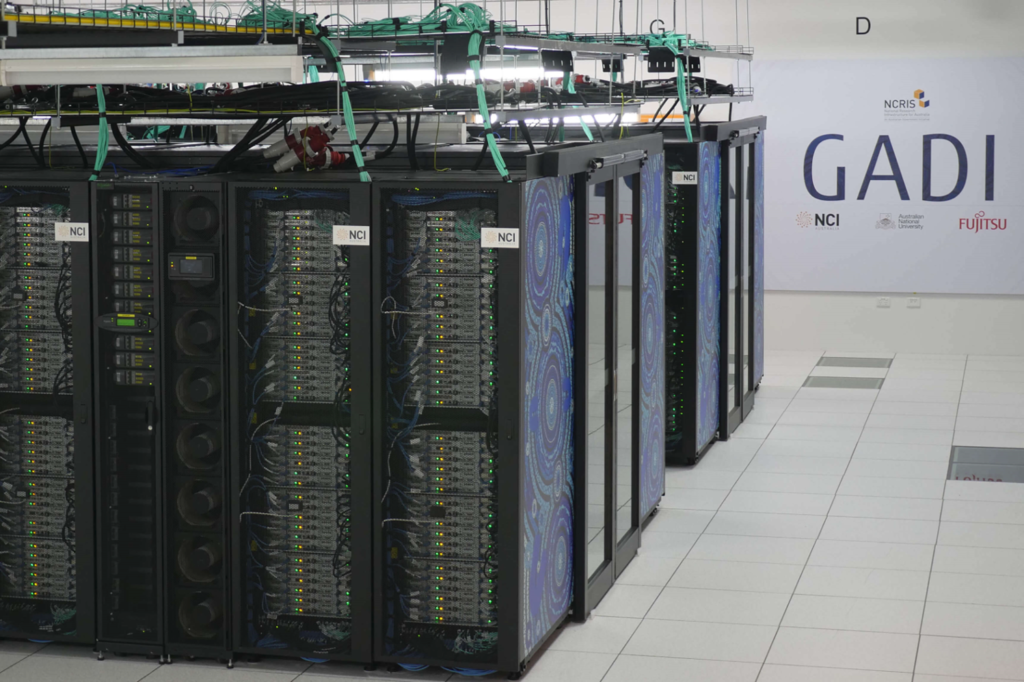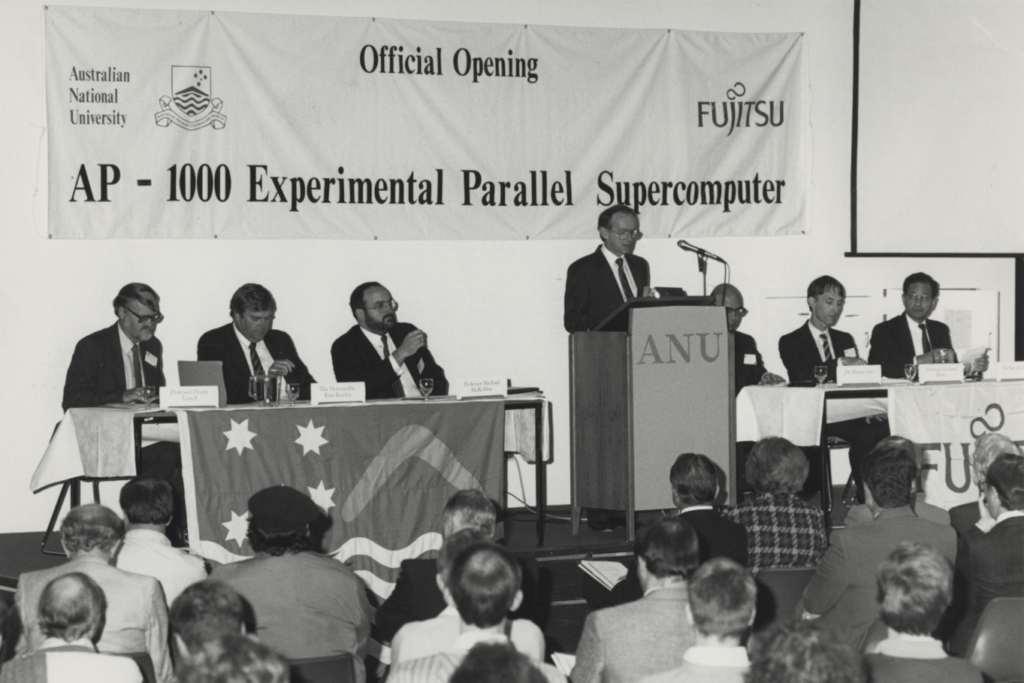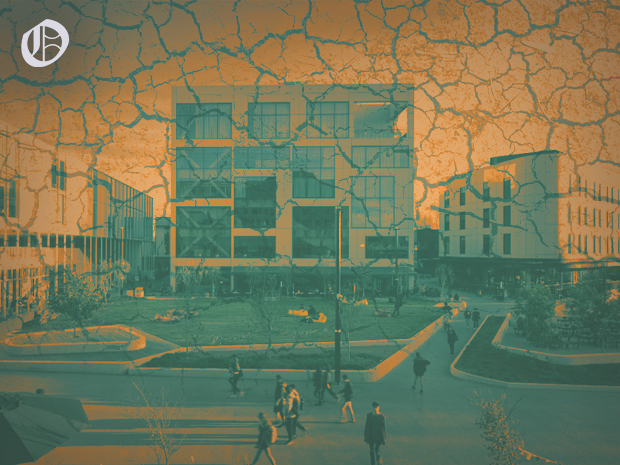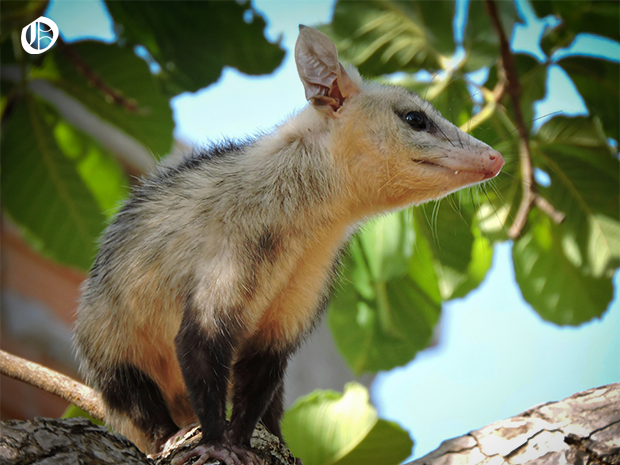Quantum Leap: ANU Partners with Fujitsu to Establish Quantum Research Centre

By Darcy Davitt
The ANU is set to establish a quantum research centre on campus after signing a Memorandum of Understanding with Fujitsu to expand the university’s quantum capabilities.
Under the agreement, ANU and Fujitsu will work towards building a quantum computer on campus, although no timeline has been announced.
The partnership will also involve opportunities for ANU researchers and academics to access Fujitsu’s quantum simulators in Japan starting next year.
A statement from Austrade revealed that new teaching and training modules will be developed to support “advanced research in fields such as cryptography, material science and quantum simulations.”
What actually is a quantum computer?
Most modern computers, including the one you’re reading from right now, use binary ‘bits’ (0s and 1s) to store and process data. Quantum computers, on the other hand, use ‘qubits’ (quantum bits) which are created by manipulating subatomic particles such as electrons and photons.
Unlike classical bits, which can only be in one state at a time (either 0 or 1), qubits have the quirky quantum characteristic of being able to encode 0s and 1s simultaneously. This ability to be in multiple states at the same time is known as ‘superposition’.
When qubits work together in superposition, their computing power grows exponentially. For example, two qubits can process four pieces of information, three qubits can compute with eight, and four can compute with sixteen.
The challenges facing quantum technology
This doesn’t mean the computers you and I use will become obsolete anytime soon. The problem with quantum computing is that creating and controlling qubits is extremely difficult, presenting a massive – and expensive – scientific and engineering challenge.
For example, quantum computers can usually only operate at extremely low temperatures – approaching absolute zero (-273.15°C) – to preserve and maintain the delicate quantum state of qubits, which is extremely energy intensive.
Many companies, such as Fujitsu, are investing heavily to harness quantum technology, with the promise of “unlocking the next wave of innovation” and accelerating global productivity. However, questions about the technology’s real-world applicability, alongside environmental and security concerns, have led some researchers to call for a tempering of the “quantum computing hype”.
Does the ANU currently perform quantum research?
Yes. ANU’s Department of Quantum Science & Technology currently researches “the quantum mechanics of photons, cooled atoms, NV centres, quasi-particles and solid state rare earth systems.”
In 2019, ANU researchers Dr Andrew Horsley and Dr Marcus Doherty co-founded Quantum Brilliance, an ANU-based company that developed the world’s first room-temperature miniaturised quantum computer. This project grew out of research conducted at the ANU School of Physics aiming to reduce the environmental and cost barriers associated with quantum hardware.

Fujitsu helped develop Gadi, which placed #24 on the global TOP500 supercomputer rankings in June 2020. Photo Credit: NCI
This is not the first time ANU has partnered with Japanese multinational Fujitsu. In 2020, Fujitsu designed and commissioned the Southern Hemisphere’s most powerful supercomputer, known as ‘Gadi’, for the National Computational Infrastructure (NCI) on campus.
Further back, in 1987, Fujitsu supplied the university with one of the most powerful computers in Australia at the time, which had a similar processing power to an early iPad.

The launch of the first ANU-Fujitsu supercomputer in 1987. Photo Credit: ANU Library
Australia and Quantum Technology
This latest ANU-Fujitsu partnership has the backing of the Australian Government’s National Quantum Strategy, which was launched in the 2023-24 Federal Budget. The strategy includes an aim for Australia to develop the world’s first fault-tolerant quantum computer, a target that Fujitsu and the ANU have identified in their Memorandum of Understanding.
On 12 August 2024, the Government also announced its National Science and Research Priorities which includes a commitment to advance quantum research “to allow us to transition to net zero in environmentally responsible ways.”
According to the CSIRO, the quantum technology industry is estimated to represent a $6 billion opportunity for Australia and will employ as many people as the oil and gas sectors do today by 2045.
What the ANU has said (so far)
ANU Deputy Vice-Chancellor for Research and Innovation Professor Lachlan Blackhall has said the collaboration “will help grow the nation’s commitment to fundamental quantum physics, which is absolutely vital if we are to harness the incredible potential of research and apply it to real-world opportunities for the quantum world.”
Associate Professor James Sullivan, who led the School of Physics’ involvement in the Memorandum of Understanding, has said the partnership “will bring a lot of interesting opportunities.”
“It jump-starts us; it’s a big step forward establishing us as a serious player in Australia, if not the world,” Professor Sullivan said.
With the details of the partnership yet to be announced, an ANU spokesperson has said, “we look forward to sharing further details as they come to hand.”
The future of the Quantum Research Centre is yet to be determined in the new context of ANU’s financial difficulties.
ANU’s initial projected deficit for this year of $60 million was revealed to be over $200 million. In response, the university has announced ‘Renew ANU’, its plan to shuffle the Academic Colleges, dissolve the College of Medicine, almost triple parking fees, and ask staff to forgo a 2.5 per cent pay rise this December.
More to come.
Graphics by Annisa Zatalini
__________________________________________________________________________________________________________________________
Know something we don’t know? Email [email protected] or use our anonymous tip submission.
If you have an issue with this article, or a correction to make, you can contact us at [email protected], submit a formal dispute, or react to the Facebook post.
Want to get involved? You can write articles, photograph, livestream or do web support. We’re also looking for someone to yell “extra!” outside Davey Lodge at 1AM. Apply today!









